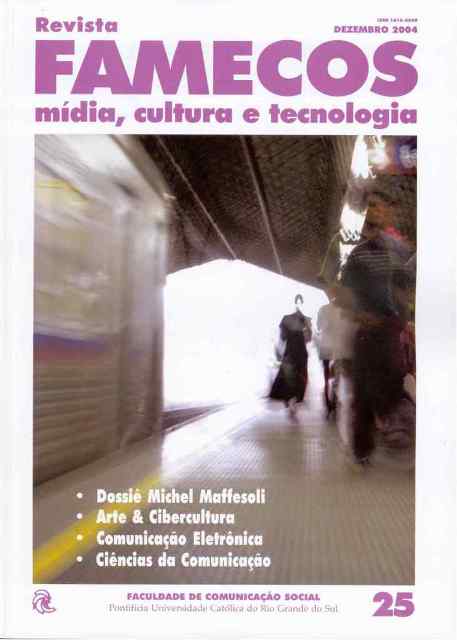Who does SBT's Journal think we are? Addressing mode in TV news show
DOI:
https://doi.org/10.15448/1980-3729.2004.25.3287Keywords:
Communication, addressing modes, telejournalismAbstract
The article proposes an exercise of interpretation of the Jornal do SBT from the application of analysis operators adopted by the Group of Research of Analysis of Telejornais / UFBA for the interpretation of the modes of address of television journalistic programs.Downloads
References
ALTHUSSER, Louis. Aparelhos Ideológicos de Estado: nota sobre os
aparelhos ideológicos de Estado. Tradução de Walter José Evangelista e Maria Laura Viveiros de Castro. 2. ed. Rio de Janeiro: Graal, 1985.
BARBOSA LIMA, Fernando. Televisão e vídeo. Rio de Janeiro: Zahar, 1985.
CASETTI, Francesco & CHIO, Federico di. Análisis de la televisión: Instrumentos, métodos y prácticas de investigación. Barcelona:
Paidós, 1999.
CHANDLER, David. Semiotics for Beginners. Disponível em:
www.aber.ac.uk/media/Documents/S4B/semiotc.html. Acesso em: 15 ago. 2003.
CONNELL, Ian. Monopoly capitalism and the media. In: HIBBIN, Sally (ed.) Politics, Ideology and the State, London: Lawrence & Wishart, 1978.
ELLSWORTH, Elizabeth. Modos de Endereçamento: uma coisa de cinema; uma coisa de educação também. In: SILVA, Tomaz Tadeu da (Org.). Nunca fomos humanos: nos rastros do sujeito. Belo Horizonte: Autêntica, 2001.
FISKE, John. Television Culture. London/New York: Routledge,
HARTLEY, John et. al. Conceptos clave en comunicación y estudios
culturales. Buenos aires: Amorortu, 1997.
HARTLEY, John. Los usos de la televisión (Trad. de Juan Trejó Álvarez). Barcelona: Paidós, 2000.
______. Understanding News. London: Routledge, 2001.
JENSEN, Klaus Bruhn & ROSENGREN, Karl Erik. Cinco tradiciones en busca del público. In: DAYAN, Daniel (Comp.). En busca del público. Recepción, televisión, medios. Barcelona: Gedisa, 1997.
JENSEN, Klaus Bruhn & JANKOWSKI, N.W. (Eds.) A Handbook of Qualitative Methodologis for Mass Communication research. London: Routledge, 1991.
MASTERMAN, L. Teaching the media. Londres: Comedia, 1985.
MORLEY, David & BRUNDSON, Charlotte. Everyday Television: “Nationwide”. London: British Film Institute, 1978.
______. The Nationwide Television Studies. London: Routledge, 1999.
REZENDE, Guilherme Jorge de. Telejornalismo no Brasil: Um perfil
editorial. São Paulo: Summus, 2000.
VÉRON, Éliséo. Il est là, je le vois, il me parle. In: Revue Communications, n. 38. Paris: Le Seuil, 1983.
Downloads
Published
How to Cite
Issue
Section
License
Copyright
The submission of originals to Revista Famecos implies the transfer by the authors of the right for publication. Authors retain copyright and grant the journal right of first publication. If the authors wish to include the same data into another publication, they must cite Revista Famecos as the site of original publication.
Creative Commons License
Except where otherwise specified, material published in this journal is licensed under a Creative Commons Attribution 4.0 International license, which allows unrestricted use, distribution and reproduction in any medium, provided the original publication is correctly cited.






